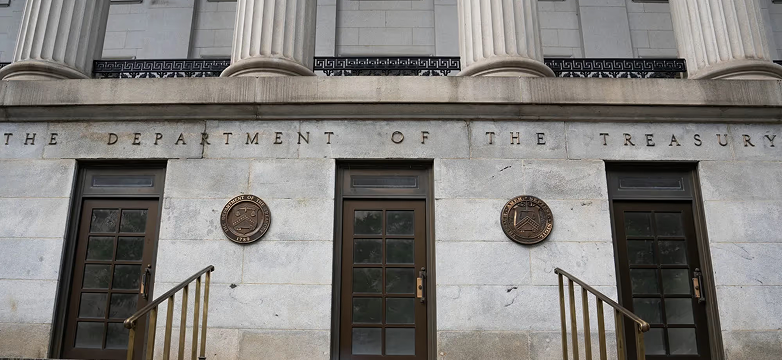How to maximize certainty in a tax credit transaction

As we approach the end of 2023, we’re helping companies with billions in 2023 tax liabilities execute their first transactions in transferable clean energy tax credits. For many tax directors and CFOs, the opportunity to meet a portion of their companies’ tax liabilities by purchasing clean energy tax credits at a discount presents an attractive opportunity to save money and support sustainability goals at the same time.
However the tax credit market is new to many. We have seen the importance of educating the market — buyers, sellers, advisors, and others — regarding the kinds of issues that routinely arise in the course of these deals and how our team helps buyers mitigate these risks. Nearly all issues we’ve seen arise in the course of closing a transaction can be mitigated with good advice (and good insurance).
First we’ll unpack some common sources of risk which buyers should be aware of, then we’ll address some additional strategies to mitigate risks.
Elements of risk:
Project risk
For projects which have yet to be placed in service, there is an element of project risk. Project risk describes the risk that a project may experience a delay, perhaps due to a labor shortage or supply chain complications, which could push tax credit generation into a later year than the buyer desires. Buyers generally do not pay for credits until they are generated, so this risk is principally related to the timing of realizing the credits.
Eligible basis and disallowance risk
Tax credit transactions are essentially an exchange of a tax credit generated by an eligible investment or activity for cash. The buyer of the credit takes on certain risks, particularly for Investment Tax Credits (ITC). ITC value is calculated as a percent of a project’s cost basis.
If, after the ITC has been sold, the IRS determines that a project’s cost basis was overstated, part of the credit can be clawed back. The IRS may also assess penalties for overstating the project’s cost basis. Buyers can indemnify themselves against this risk by purchasing insurance covering eligible basis and disallowance risk.
Recapture risk
Similarly, ITCs are subject to recapture risk, or the risk that the IRS can take back, or “recapture” a portion of the credit if the project that generated the credit is taken out of service (e.g. destroyed and not rebuilt) within the first five years of service (stepping down 20% each year). Tax credit buyers very commonly ask the seller to obtain insurance indemnifying against the risk of recapture.
Seller creditworthiness risk
In lieu of or alongside insurance, credit buyers can accept guarantees or indemnities from the project developer covering certain risks. In this event, the buyer may take on risks related to seller creditworthiness, and must determine whether the seller has sufficient backing to support the indemnification.
Risks such as the ones in Table 1 are a factor in most transactions (especially ITC transactions), and can be managed through insurance or by obtaining indemnities from the seller. We often find that buyers are familiar with these risks and have an initial understanding of how to mitigate them when they enter the market for tax credits. Even so, unexpected developments can arise and require buyers and their advisors to adapt.

Risk mitigation strategies
We commonly find that risk mitigation strategies help many buyers feel confident as they navigate a transaction. A central theme: clear strategy and good advisors. The first ensures that a buyer knows their “why;” whether that is to invest in clean energy, manage taxes, or just test the market, buyers should know their options and objectives. In turn, good advisors relieve a buyer from having to become an expert in everything.
Buyers can also spend time defining the types of credits, terms, and counterparties they want to engage with — we’ve described this as “building a box” to pre-screen credit opportunities. Buyers can engage with intermediaries, as well, to ensure that they have knowledgeable partners in their corner. And we recommend that buyers align internally and with their advisors on their goals for each stage of a transaction.
Prepare a term sheet
In practice, term sheets present an early opportunity for the seller and buyer (and their advisors) to align on key terms, including the price paid for the credits and the total volume of credits. While there is value in keeping the term sheet high-level, we have also seen several areas of misalignment arise that can threaten to throw a deal off course. We suggest that buyers and sellers use the term sheet to get on the same page regarding several issues:
- Timing of payment: align on what buyer and seller need regarding timing of payment and tax filing cadence. One way a misalignment can be addressed is by adjusting price to recognize the time value of money for the less-desirable payment timing. We've seen buyers and sellers work through this, but it is challenging when it arises last minute. Ensure both sides are clear on the other party’s fiscal year end and implications of any mismatch or non-calendar fiscal year-ends.
- Fee cap: ensure that buyer’s legal and diligence advisors have seen and can sign off on the fee cap negotiated to cover the cost of due diligence and other legal review.
- Insurance coverage: ensure that the buyer's legal team is engaged early and understands the contours of insurance that the seller will be asked to obtain. Buyer and seller should agree on who is procuring the insurance policy, what circumstances are covered by recapture insurance, and whether to cover hard costs in addition to the project's step up in cost basis, where appropriate. Once again, buyers and sellers should align on how trade offs in the cost of insurance read through to the overall price paid for the credits.
- Placed in service (PIS) date: For projects where there is some uncertainty regarding the PIS date, or for projected end-of-year PIS projects, address upfront how slippage will be managed. This can be done by fixing price adjustments, agreeing on a net present value formula adjustment, or through other commercial mechanisms.
Conduct due diligence
Due diligence is an important part of any transaction. Buyers typically conduct due diligence with the aid of specialized tax and legal advisors. Due diligence also plays an important role in managing the risk of fees related to excessive credit transfers. If the IRS deems that a project overstated (and then sold) tax credits above and beyond those that the project is allowed to generate (say, by claiming but failing to qualify for certain bonus tax credits or including costs of equipment that are not eligible to generate tax credits), the buyer as the owner of the credits can be subject to a 20% excessive credit transfer fee.
However, in the IRS’s June 2023 draft transferability guidance, the agency proposed to waive these fees in the event the buyer can show that they had “reasonable cause” to believe the credit transfers were not excessive. IRS proposes (and sought comments) on the due diligence elements that can show that a buyer had reasonable cause.
Strategic risk management
In addition to managing a thorough due diligence process and negotiating a term sheet, buyers can adopt other strategies to diversify their risk exposure, subject to their individual risk preferences.
Buyers can familiarize themselves with the array of projects and credits available to them by screening projects on a variety of criteria in the Crux platform. Our team can provide market insight into credit pricing, competitiveness, and other factors to help credit buyers make informed decisions.
With a better understanding of the range of available credit opportunities, some credit buyers may decide to adopt diversification strategies — across technologies, credit types, credit vintages, and sellers — as a way to manage risks across a transaction.
By contrast, some buyers may decide to focus only on one particular type of credit transaction. Since Production Tax Credits (PTCs) generally have fewer sources of risk, some buyers adopt a PTC-focused strategy. Lower risk factors generally mean that PTCs trade at smaller discounts relative to ITCs, however, so buyers need to balance their expectations for a return with their tolerance for risk.
Table 2 summarizes these common risk mitigation strategies and how buyers can leverage them to execute a successful transaction.

Managing risk is an essential part of executing a successful transaction in transferable tax credits. With a clear plan in place and experienced advisors, many buyers today are finding that tax credits are both a straightforward and incredibly valuable investment for their businesses. Not only can tax credits generate high rates of return by liberating cash earmarked for taxes, but companies can invest in critical decarbonization solutions across the energy value chain, support US industry and good paying jobs, and drive investment in disadvantaged communities. To learn more about how Crux can support you as you navigate this important new marketplace, get in touch with us.
Additional insights & news

April 4, 2025
This guide examines the differences between tax equity and transferable clean energy tax credits, including the rise of hybrid tax equity structures that utilize elements from both financing structures.
Read More
March 31, 2025
Advanced manufacturing tax credits are among the most in-demand in the tax credit market. Learn what you need to know about these popular credits in this guide.
Read More
March 26, 2025
Beginning in 2025, clean energy projects have access to the new §48E clean electricity investment tax credit and §45Y clean electricity production tax credit. Going forward, developers of new projects need to understand the details of the new tax credits, and tax credit buyers should understand the different qualification parameters under the tech-neutral tax credit regulations.
Read More





.jpg)





























































